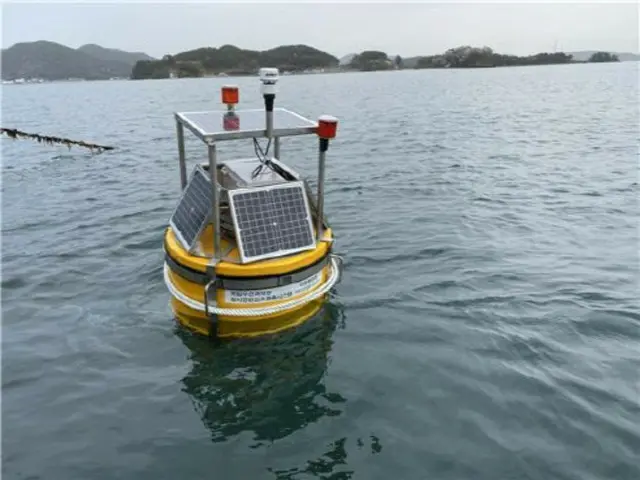The National Fisheries Research and Development Institute of the Ministry of Oceans and Fisheries announced that the first oxygen-deficient water this year was discovered in Jinhae Bay on the southern coast during a field survey conducted on the 22nd and 23rd.
A water mass with a dissolved oxygen concentration of 3mg/L or less, which hinders the respiratory activity of fish and shellfish. The oxygen concentration of oxygen-deficient water, which was discovered for the first time this year, ranged from 1.55mg/L to 2.83mg/L.
The oxygen-deficient water was observed in the lower layers of the Jinhae Bay area. The reason for this is the high temperatures in summer. When the surface water temperature rises due to high air temperatures, it becomes difficult for the surface water and the lower water to mix.
Without this circulation of seawater, the supply of oxygen from the surface to the lower layers would be halted, and the microorganisms that have accumulated in the lower layers would consume the dissolved oxygen in the process of decomposing organic matter, resulting in oxygen-deficient water.
In the case of the South Sea coast, oxygen-deficient water begins to occur every year from the end of May to the beginning of June, and disappears between the end of August and the beginning of October. Last year, the first occurrence was on May 24th, and this year, it has been almost 100 years since the last occurrence.
As ocean temperatures rise, oxygen-deficient water moves closer to the surface, making the outbreak more widespread.
According to the National Fisheries Research and Development Institute, the occurrence of oxygen-deficient water has been occurring earlier than in the past five years since 2017.
The number of days has increased, and the duration of the problem has also tended to be about 10 days longer on average. The impact of oxygen-deficient water is expanding as the hot weather comes earlier and lasts longer. In fact, the amount of oxygen-deficient water last year was much lower than the previous year.
The oxygen-deficient water caused direct damage to the aquaculture organisms.
Of course, there is a possibility that the number of deaths will increase at shellfish farms, such as mussels and oysters. In particular, the damage will increase from the beginning of June, which overlaps with the time for harvesting mussels and oysters, which corresponds to the agricultural "seeding" period.
In addition, in the case of hand-held fish farms where shellfish and sea squirts are raised by hanging ropes in the sea, the deeper the water, the greater the damage that may occur.
Preventive measures such as installing ropes in the layers are necessary. The National Institute of Fisheries Science and Technology conducts on-site surveys every year using a fisheries science research vessel. It also aims to improve the accuracy of predictions using information and communication technology and to improve the quality of fishing.
The plan is to help workers prepare in advance for potential damage, and it is also expected that artificial intelligence will be used to detect oxygen-deficient water at an early stage.
"This summer is expected to be as hot and rainy as last year, and the South Sea coast is expected to see heavy rains," said Choi Young-seok, director of the National Fisheries Research and Development Institute.
"We will do our utmost to provide relevant information quickly and prevent harm to those involved in the fishing industry," he added.
2024/05/26 07:04 KST
Copyrights(C) Edaily wowkorea.jp 107

